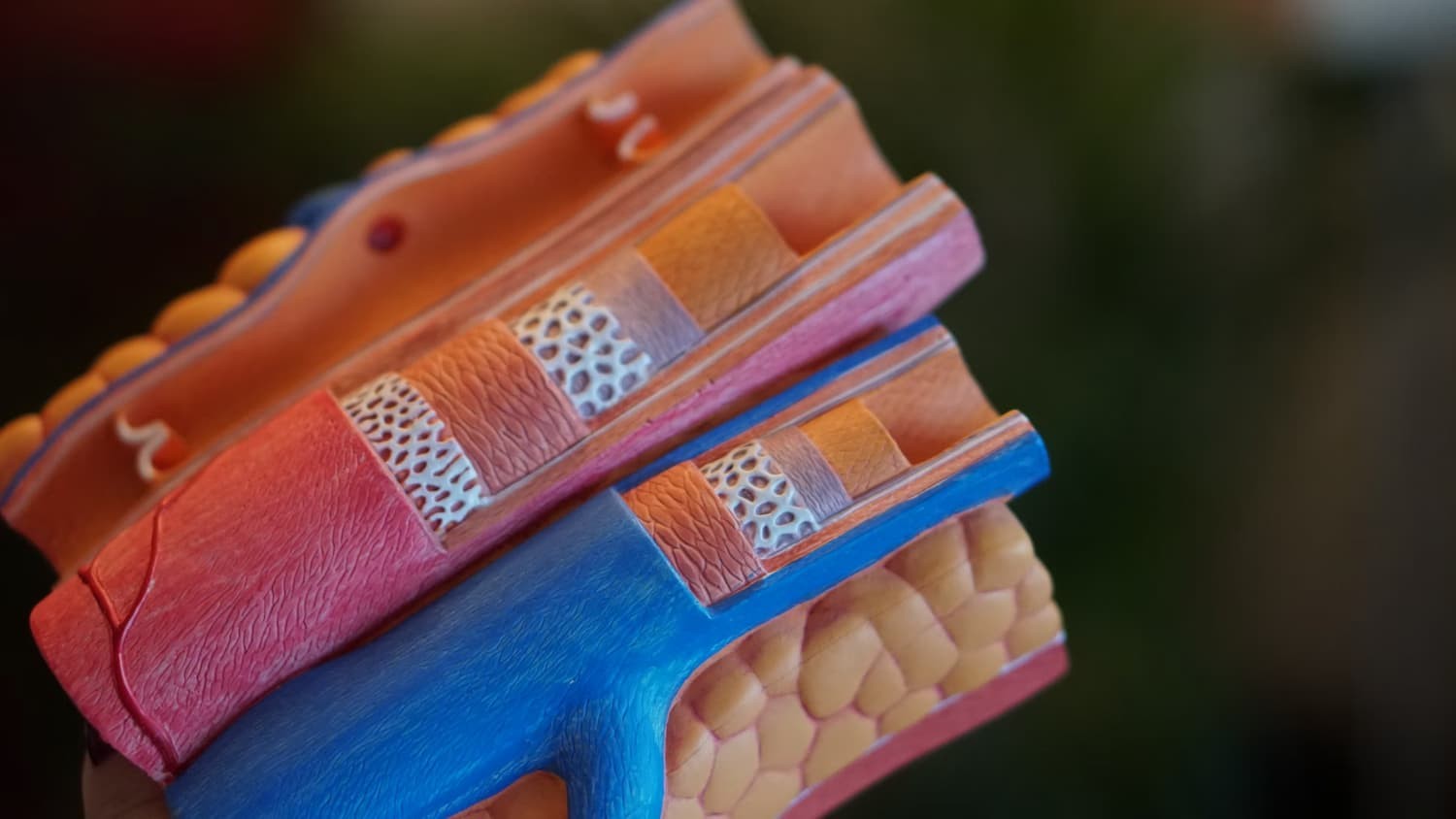
Arteriosclerosis is an arterial disease that affects the blood vessels that carry oxygen-rich blood from the heart to the rest of the body. It's a form of coronary artery disease that occurs when the arteries become hardened and narrowed, which makes it difficult for blood to flow properly.
Atherosclerosis is a type of arteriosclerosis that usually begins in childhood, but may develop in adulthood. Restricting blood flow can lead to a number of serious health complications, such as:
- Heart attack
- Stroke
- Kidney failure
- Peripheral artery disease
- Blood clots
- Carotid artery disease
- Myocardial infarction
- Heart failure
What are the symptoms of arteriosclerosis?
The symptoms of arteriosclerosis depend on the stage of the disease. In early stages, there may be no symptoms at all. As the disease progresses, typical symptoms of atherosclerosis may include:
- Chest pain
- Shortness of breath
- Fatigue
- Severe headache
- Leg pain when walking
- High blood pressure
- Difficulty speaking
- Vision problems
- Lightheadedness
- Numbness of facial muscles
Source: Remedy Land
What causes arteriosclerosis?
Arteriosclerosis develops when the carotid arteries, renal arteries and other major arteries in your body that carry blood from your heart to all of your organs harden and narrow. This can be caused by plaque buildup on the artery walls or by an underlying medical condition.
Plaque is made up of high cholesterol levels, fat and other substances in the blood. Over time, plaque can harden and narrow the arteries, making it difficult for blood to flow properly. Medical conditions that can cause arteriosclerosis include diabetes, high blood pressure and high cholesterol.
Anyone can develop arteriosclerosis or its subtypes, including atherosclerosis, but some people have a greater risk of atherosclerosis. Lifestyle factors play a crucial role in the development of atherosclerosis. Among the risk factors that increase your chances of developing the disease include:
- Smoking
- High blood pressure
- High levels of bad cholesterol
The risk of atherosclerosis is also high among diabetic patients and people with a family history of the disease.
What are the four stages of arteriosclerosis
The four stages of the disease explain the progression of atherosclerosis and can be used to determine the type of treatment that is appropriate for a diagnosed patient.
1. Endothelial damage
The endothelial dysfunction stage of arteriosclerosis is characterised by a loss of function in the endothelial cells that line the blood vessels of the artery wall. This can lead to a number of problems, including an increased risk of clotting, chronic inflammation and damage to the arteries themselves. Endothelial cell damage causes oxidative stress, which disrupts the balance between the production of reactive oxygen species, also known as free radicals, and the body's antioxidant defence mechanism. Oxidative stress is the ultimate cause of tissue death
2. Formation of fatty streak
In the fatty streak stage of arteriosclerosis, dead foam cells start forming in the arterial wall as a result of an accumulation of fat and cholesterol in the artery. The formation of foam cells blocks the artery, but still allows blood to pass through. The fatty streak stage is often preceded by the accumulation of white blood cells in the artery, called inflammation. If left untreated, the fatty streak can progress to the next stage, called plaque
3. Plaque progression
The buildup of plaque takes place in this stage, which is often asymptomatic, meaning that there are no noticeable symptoms. The fatty deposits start forming into a plaque on top of the artery's smooth muscle cells. Calcium contributes to the buildup of plaque, strengthening and expanding it. The atherosclerotic plaque narrows the arteries, causing blood flow to become even more restricted than it already is.
4. Plaque rupture
This is the final stage of atherosclerosis and is characterised by a tear or break in the plaque. It can cause blood to clot, and this clot formation constricts the artery lumen or opening, limiting blood supply and resulting in a heart attack or stroke. Plaque rupture can lead to serious complications of atherosclerosis and can be fatal if not treated immediately.
What are the treatment options for arteriosclerosis?
The treatment for atherosclerosis will depend on the stage of the disease. In early stages, particularly the stage where the endothelial damage takes place, the treatment plan usually focuses on lifestyle changes and medications to help improve the function of the endothelial cells. Your doctor may recommend the following:
- Quit smoking
- Eat a healthy diet that's rich in omega-3 fatty acids to reduce the markers of inflammation
- Regular exercise
For severe atherosclerosis, treatment options may include medication, surgery or angioplasty.
The primary prevention method for arteriosclerosis involves maintaining a healthy lifestyle by quitting vices and maintaining a heart-healthy diet rich in omega-3 fatty acids. Excellent sources of this good fats include fatty fish like salmon and tuna, almonds, oats, flaxseed and blueberries. Taking medicinal plants and natural supplements to help control blood sugar levels can also help prevent atherosclerosis risk factors.
Maintaining a healthy weight and keeping your cholesterol levels within a normal range are other crucial considerations. Not only will this prevent plaque buildup, but it will also ensure a strong and healthy heart muscle, allowing free flow of blood throughout your body.
Despite being classified as a cardiovascular disease, arteriosclerosis can affect other parts of the body. It's important to avoid the risk factors for atherosclerosis and other types of arteriosclerosis. The good news is that even if you are at risk for atherosclerosis, getting an annual physical exam will protect you from the disease. The sooner you inform your primary healthcare provider about your family and medical history, the easier it will be to gain access to improved treatments to avoid complications of atherosclerosis.









